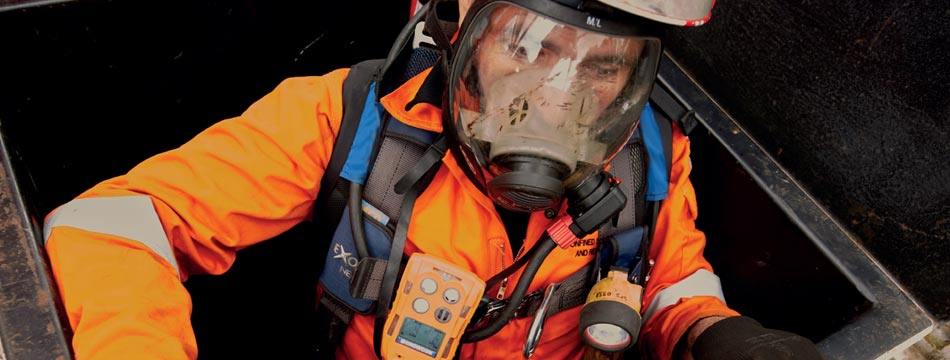
Confined spaces pose a significant hazard to workers’ lives. Recently, BBC East Midlands published a story covering a corporate manslaughter trial taking place in Leicester Crown Court. Greenfeeds Limited is charged with two counts of corporate manslaughter after two of its employees, Nathan Walker (19) and Gavin Rawson (35), lost consciousness due to high CO2 concentrations and subsequently drowned inside a tanker.[1] Seven years before this incident in May 2009, two men, Maarten Pieter Den Heijer (30) and Robert MacDonald (45), died as a result of low O2 concentrations beneath the deck of a barge moored on Loch Creran, a sea farm near Oban. Scottish Sea Farms and Logan Inglis were fined £600 000 and £40 000 respectively (these fines were later reduced to £333 335 and £20 000) for breaches of health and safety regulations such as failing to train staff for working in confined spaces like the sealed chambers present on the Loch Creran barge.[2] Approximately 15 people in the UK lose their lives due to accidents in confined spaces; this number includes fatalities resulting from failed rescue attempts.[3] Therefore, it is vital to understand the risks, regulations, procedures, and equipment pertaining to working in confined spaces before you or your employees undertake any work. Thankfully, Crowcon has answered several frequently asked questions about confined spaces using the information outlined in the HSE's (UK) and OSHA's (USA) documentation on the subject.[4]
Quick Links
- What is a Confined Space?
- How Do You Identify a Confined Space?
- What is a Permit-required Confined Space?
- What are the Hazards in Permit-required Confined Spaces?
- What are the Risks in Permit-required Confined Spaces?
- Who is Responsible for Ensuring Safe Working Practices in Confined Spaces?
- What are the Host/Controlling Employer’s Obligations?
- What are the Entry Employer’s Obligations?
- What are the Employees’ Obligations?
- When Should the Atmosphere in a Confined Space be Tested?
- What Equipment Should Be Used to Test/Monitor the Atmosphere in a Confined Space?
- Who Should Test/Monitor the Atmosphere in a Confined Space?
- Which Intrinsically Safe Crowcon Products are Suitable for Use in Confined Spaces?
- Further Information
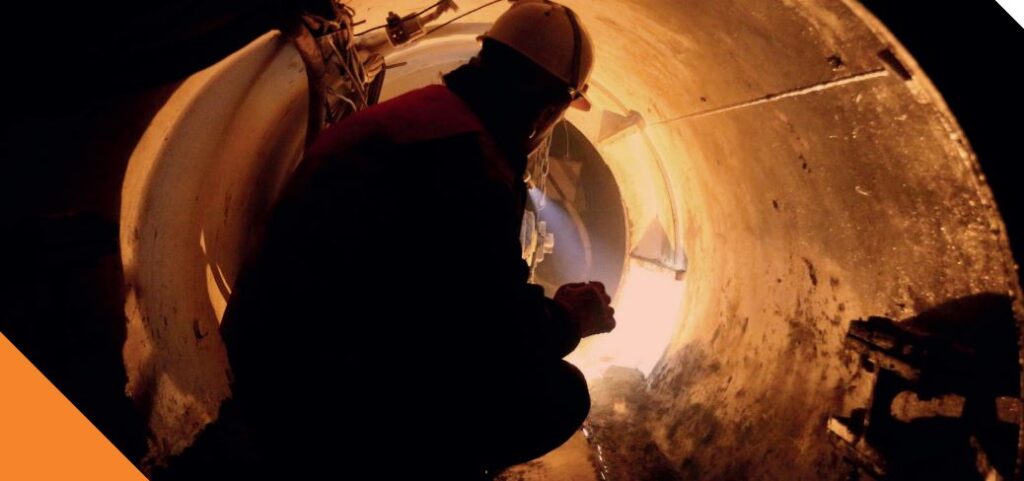
What is a Confined Space?
Crowcon explains that a confined space is defined as
“[…] a location that is substantially enclosed although not always entirely, and where serious injury can occur from hazardous substances or conditions within the space or nearby such as a lack of oxygen”[5]
Crowcon highlights that confined spaces are considered so dangerous that entry into them must be the only and final option for carrying out necessary work.
HSE: Confined Spaces Regulations 1997, Approved Code of Practice, Regulations, and Guidance
How Do You Identify a Confined Space?
The HSE identifies a confined space as
“[…] any place, including any chamber, tank, vat, silo, pit, trench, pipe, sewer, flue, well or other similar space in which, by virtue of its enclosed nature, there arises a reasonably foreseeable specified risk.”[6]
However, Crowcon goes on to explain that an area does not have to be fully enclosed on all sides, small, difficult to get in and out of, or a place where people do not regularly work to be identified as a confined space. For example:
- Vats, silos, and ships’ holds may have open tops
or sides - Grain silos and ships’ holds are sometimes very
large - Some confined spaces have several
exits/entrances and/or large openings - Places, such as areas for spray painting cars in
car repair centres, may be frequently used by workers despite being identified
as confined spaces
Furthermore, there are some situations in which the area itself is not defined as a confined space but is identified as one while work is ongoing and until oxygen concentrations recover to a safe level. These instances include:
- During welding as this consumes some of the breathable oxygen
- In spray booths during paint spraying
- When using cleaning chemicals that may release volatile organic compounds (VOCs) and/or acidic gases into the atmosphere
- Significantly rusty areas as the level of available oxygen may have been dangerously reduced
What is a Permit-required Confined Space?
According to the OSHA, permit-required confined spaces contain certain hazardous conditions that pose an immediate threat to operators’ lives if they are not properly identified, evaluated, tested, and controlled. The OSHA explains that
“A permit-required confined space means a confined space that has one or more of the following characteristics:
• Contains or has the potential to contain a hazardous atmosphere;
• Contains a material that has the potential for engulfing an entrant;
• Has an internal configuration such that an entrant could be trapped or asphyxiated by inwardly converging walls or by a floor which slopes downward and tapers to a smaller cross-section;
• Contains any other recognised serious safety or health hazard”[7]
OSHA: Confined Spaces in Residential Construction Fact Sheet
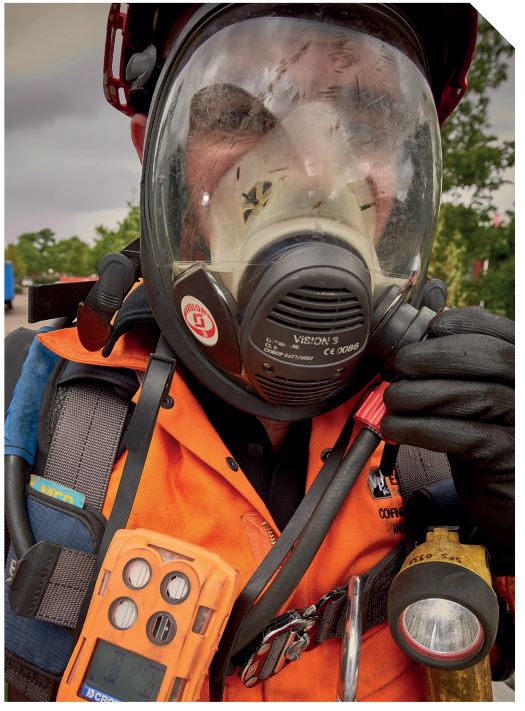
What are the Hazards in Permit-required Confined Spaces?
A permit-required confined space may present one or more of the following hazardous conditions:
- Flammable substances and oxygen enrichment
- Excessive heat
- Toxic gas, fume, or vapours
- Oxygen deficiency
- Ingress or pressure of liquids
- Free-flowing solid materials
- Exposure to electricity
- Loud noise
- Loss of structural integrity
- VOCs (Volatile Organic Compounds)
What are the Risks in Permit-required Confined Spaces?
A permit-required confined space is a confined space where there is a risk of at least one of the following:
- Serious injury due to fire or explosion
- Loss of consciousness due to increased body temperature
- Loss of consciousness or asphyxiation caused by gases, fumes, vapours, or lack of oxygen
- Drowning as a result of an increased level of liquid
- Asphyxiation arising from a free-flowing solid or from being unable to reach a respirable environment having become trapped by the free-flowing solid
Who is Responsible for Ensuring Safe Working Practices in Confined Spaces?
Using information outlined in the OSHA’s Confined Spaces in Residential Construction Fact Sheet, Crowcon advises that individuals occupying the following roles have an obligation to ensure safe working practices in confined spaces:
- Host employer: the employer who owns/manages the property where the work is taking place
- Controlling contractor: the employer with overall responsibility for construction at the worksite; this may be the same person as the host employer if the controlling contractor owns or manages the property. This person is the primary point of contact for information about permit-required confined spaces at the worksite and passes this information on to the entry employers. They are responsible for ensuring that staff working in the same confined space but under the direction of different entry employers do not create hazards for each other; they’re also responsible for ensuring that employers outside the confined space do not create dangers for those working within it.
- Entry employer (sub-contractor): any employer who decides that an employee it directs will enter a permit-required confined space; entry employers must provide information about their entry programs and the hazards encountered in confined spaces to the controlling contractor so that the controlling contractor can pass this information on to other entry employers.
- Employees: employees have a responsibility to raise concerns, highlight risks, and ensure that health and safety measures are practical and effective.
What Are the Host/Controlling Employer’s Obligations?
A host/controlling employer must:
- Know the location of each permit-required confined space
- Understand the hazards or potential hazards in each space and/or why the confined space requires a permit
- Be aware of any precautions that the host and/or previous host, controlling, or entry employer implemented to protect workers
What are the Entry Employer’s Obligations?
Entry employers are required to fulfil the following to ensure safe working practices in confined spaces:
Inform Employees
Entry employers must inform employees working in the vicinity of each confined space of its location and dangers. This may be achieved, for example, by using warning signs positioned at each possible entry to the space. Entry employers also have a responsibility to prevent their employees from entering the space unless this is part of an agreed-upon program compliant with relevant standards.
Personal Protective Equipment
Before allowing employees to enter a permit-required confined space, entry employers must attempt to eliminate or isolate the hazards in that space. If work practices or engineering cannot adequately protect workers then entry employers must equip workers with relevant personal protective equipment (PPE) as well as provide training on how to use it and information on any related hazards before employees commence any work in the confined space.
Training
All workers involved in permit-required confined spaces operations must be educated to ensure they can perform tasks safely, understand the hazards present in these confined spaces, and are aware of the methods used to isolate, control, or protect workers. All employees must be informed of the location and dangers of each confined space and should be trained to understand that they may not enter these spaces without authorisation and must not attempt entry rescues if they are not authorised to do so.
Written Permit-required Confined Space Entry Program
The entry employer must establish a system for preparing, using, and cancelling entry permits.
Rescue
Prior to commencing any work in the confined space, a suitable and sufficient rescue procedure must be in place. Employers cannot solely rely on the emergency services, a dedicated response team has to be ready to act in the event of an emergency and, if necessary, resuscitation equipment should be provided.
What are the Employees’ Obligations?
Employees have a responsibility to:
- Raise concerns
- Highlight potential risks
- Ensure health and safety controls are practical and effective
When Should the Atmosphere in a Confined Space be Tested?
The atmosphere within a confined space should be tested when:
- Knowledge of the confined space (e.g., previous
contents or exposure to chemicals) indicates that the atmosphere may be
contaminated or unsafe to breathe to any degree - There is any doubt regarding the condition of
the atmosphere - The atmosphere has been previously contaminated
and subsequently ventilated
All testing to verify the oxygen concentration and presence of hazardous gases, fumes, or vapours must take place prior to entering the confined space.
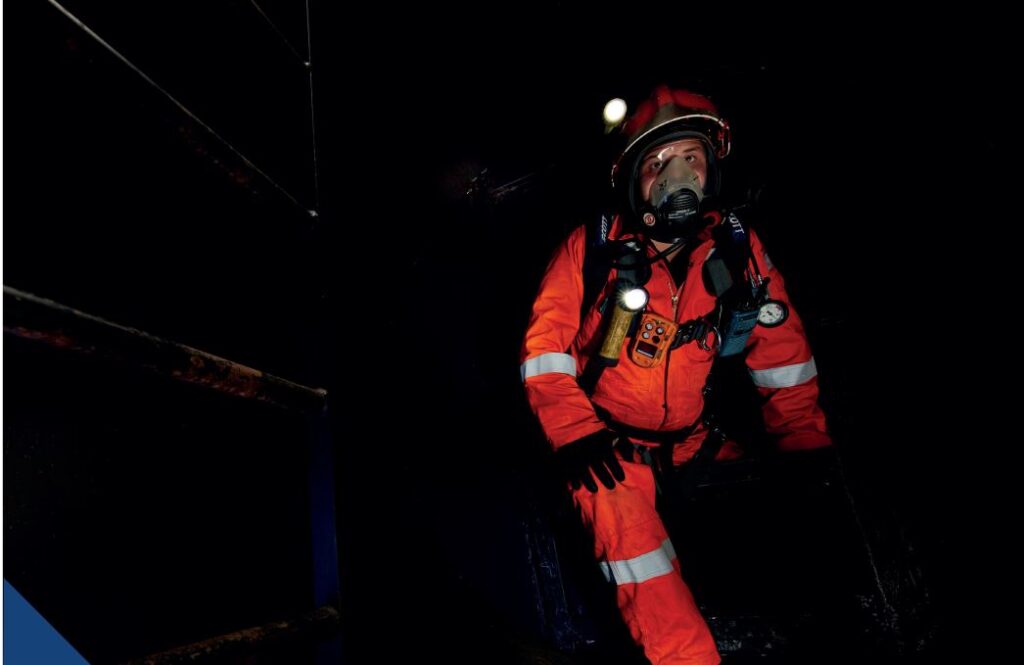
What Equipment Should be Used to Test/Monitor the Atmosphere in a Confined Space?
The equipment required to test and monitor the atmosphere in a confined space will vary depending on the possible contaminants present in the area. For example, where there is a risk of flammable or explosive atmospheres, flammable gas monitors must be calibrated to detect the vapours or gases that the risk assessment has identified as potentially present in the area. These gases and vapours may vary from confined space to confined space; therefore, flammable gas monitors may need alternative calibrations for different confined spaces. It is also critical that any equipment used to monitor potentially flammable or explosive environments is certified as Intrinsically Safe.
Additionally, as the atmosphere within a confined space can often be tested from the outside, a long probe is required to draw samples from the space. When using flexible sample tubing, take care to ensure it doesn’t draw water and check that it isn’t impeded by kinks, blockages, or blocked/restricted nozzles; in-line filters can help to address these problems.
It is vital that you ensure all monitoring equipment is completely functional; Crowcon advises including testing and calibration of detectors/monitors as part of daily operator checks.
Who Should Test/Monitor the Atmosphere in a Confined Space?
Testing/monitoring of the atmosphere in a confined space should be conducted by a competent person. An individual who:
- Is aware of the existing standards regarding the
airborne contaminates being measured - Has been trained to understand the risks involved
in carrying out testing in confined spaces - Can interpret the results and take any required action
Readings are to be taken in the order of oxygen, flammable, then toxic, and records of the results should be kept.
Which Intrinsically Safe Crowcon Products are Suitable for Use in Confined Spaces?
Crowcon offers an eclectic selection of gas detectors and monitors that have been certified to meet local intrinsically safe standards.
Gas Pro
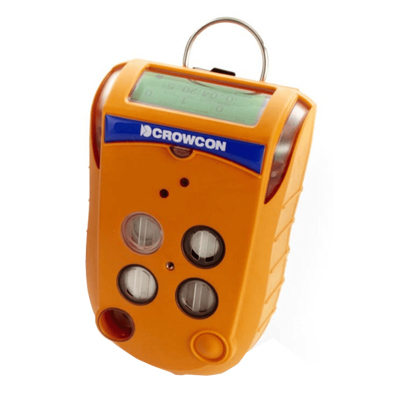
Capable of detecting up to five different gases (carbon monoxide, hydrogen sulphide, oxygen, methane, and carbon dioxide), the Crowcon Gas Pro Multi-Gas Detector is a compact, rugged gas monitor with an easy-to-read top-mounted display and clear audio, visual, and vibration alarms. An optional internal pump, which is activated with the flow plate, makes pre-entry testing easy and means the Crowcon Gas Pro Multi-Gas Detector can be worn in either pumped or diffusion mode.
Gas Pro TK
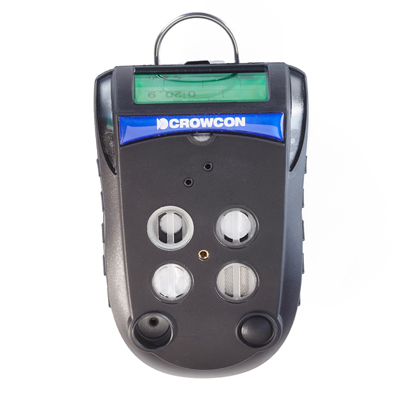
Offering the same gas safety features as the Crowcon Gas Pro Multi-Gas Detector, the Crowcon Gas Pro TK Monitor is ideal for inerting applications as it also includes a Tank Check mode which auto-ranges between %vol and %LEL.
T4
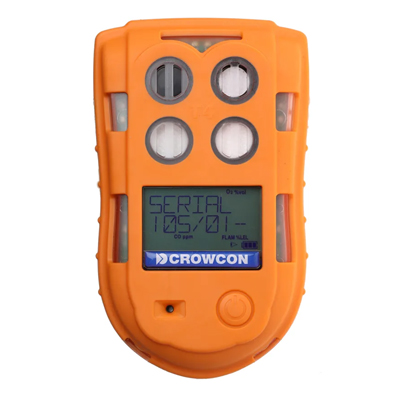
Rugged, portable, and equipped with a backlit, 180°-rotating display as well as clear audio, visual, and vibrating alarms, the Crowcon T4 Portable Personal Gas Detector provides protection against up to four common gas hazards:
- Carbon Monoxide
- Hydrogen Sulphide
- Flammable Gases
- Oxygen Depletion
The Crowcon T4 Portable Gas Detector also delivers improved detection of pentane, hexane, and other long-chain hydrocarbons.
Tetra 3
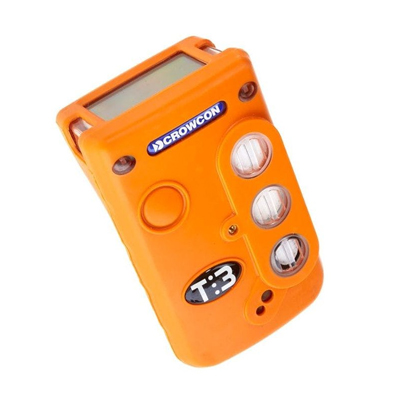
Featuring a top-mounted backlit display, audible, visual, and vibration alerts, and a compact, rugged casing, the Crowcon Tetra 3 Portable Multi-Gas Detector monitors up to four of the most common gases:
- Carbon Monoxide
- Methane
- Oxygen
- Hydrogen Sulphide
It also offers expanded ammonia, ozone, sulphur dioxide, and H2-filtered CO (for steel plants) ranges.
Further Information
Drawing on information detailed by the OSHA and HSE, Crowcon has produced a confined spaces white paper titled Confined Space Entry: Why So Dangerous?
Download Crowcon’s White Paper
For more help and advice regarding Crowcon’s range of gas detectors and monitors, please contact our Sales team on 01642 931 329 or via our online form.
Footnotes
[1] Carole Lowbridge, ‘Yard workers drowned in pig feed, manslaughter trial hears’, BBC News, last accessed 16 May 2022
[2] BBC News, Loch Creran barge death firms have £640 000 fines cut, last accessed 16 May 2022, and, Justin Tyas, ‘Accident report: confined space fatalities’, Croner-1, last accessed 16 May 2022
[3] Michelle Putter, 'What are the emergency procedures for confined space workers?’, CPD Online College, last accessed 16 May 2022
[4] Information for this blog was gathered using the following sources:
- Health and Safety Executive, Safe Work in confined spaces: Confined Spaces Regulations 1997, last accessed 16 May 2022
- Georgia Pratt, ‘What are the Dangers of Confined Space Entry?’, Crowcon, last accessed 16 May 2022
- Occupational Safety and Health Administration, Confined Spaces in Residential Construction, last accessed 16 May 2022
[5] Georgia Pratt, ‘What are the Dangers of Confined Space Entry?’
[6] Health and Safety Executive, Safe Work in confined spaces: Confined Spaces Regulations 1997, p.7
[7] Occupational Safety and Health Administration, Confined Spaces in Residential Construction


